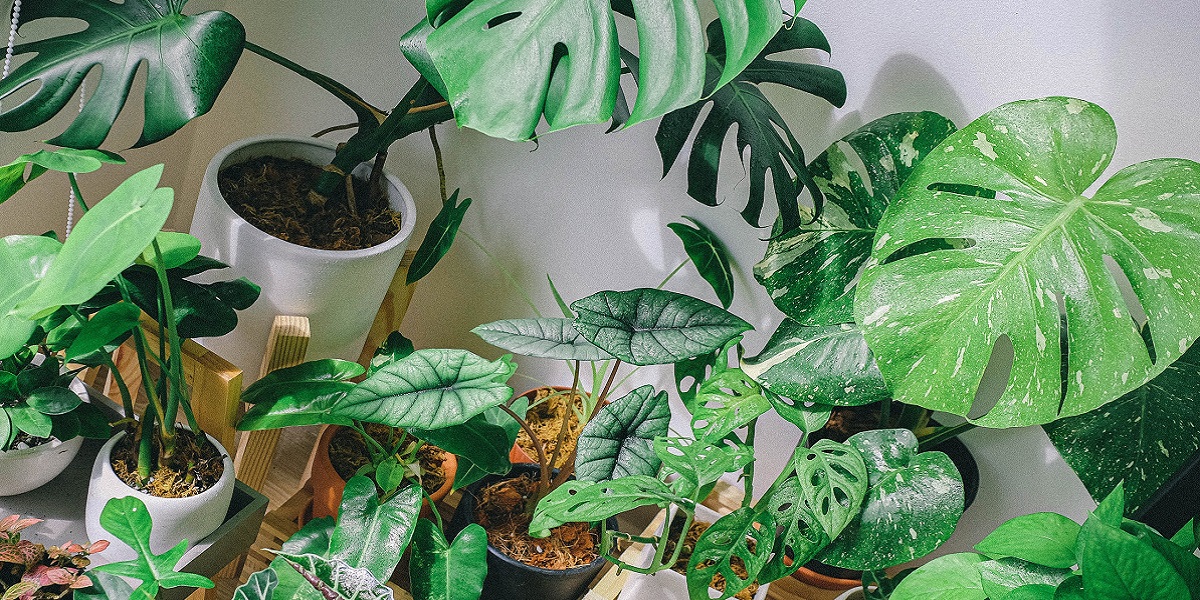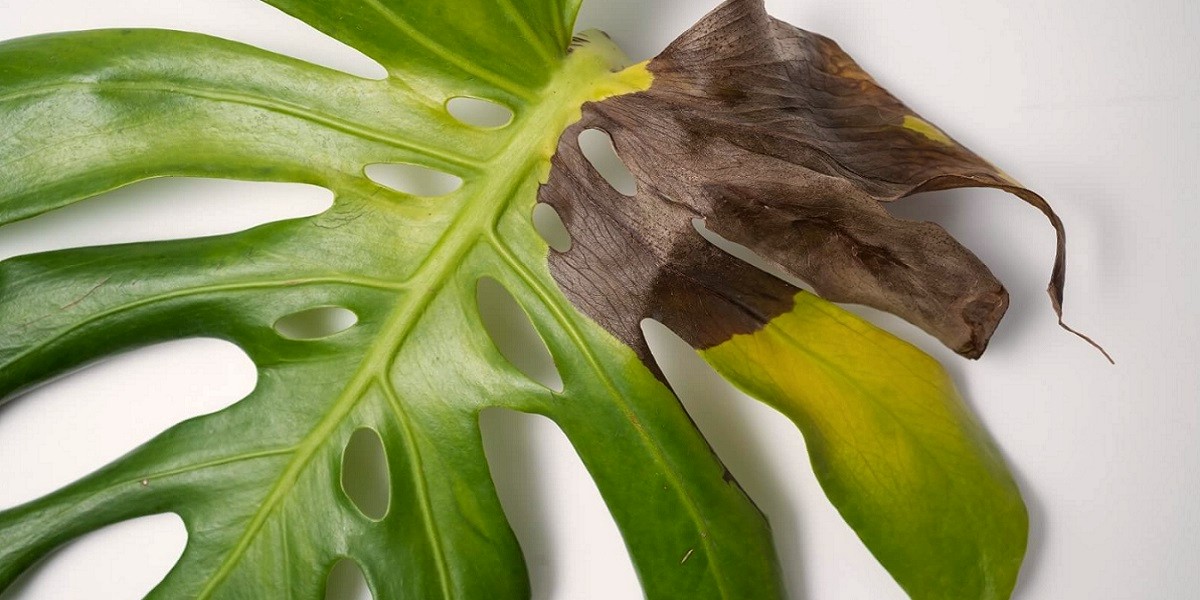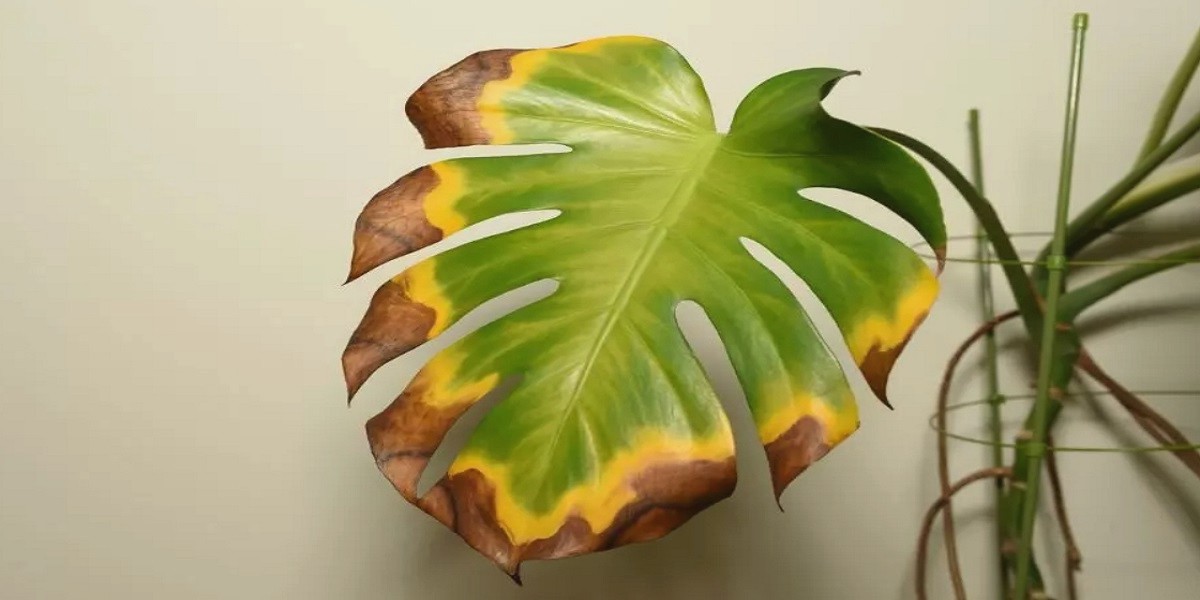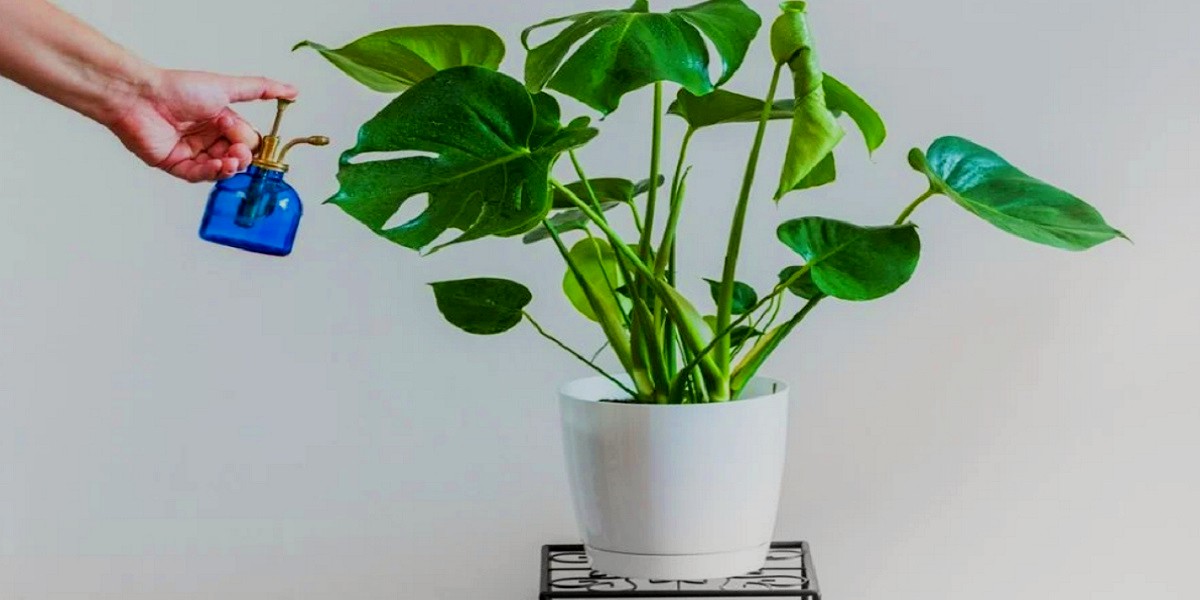Originally a tropical plant from Central America, Monstera Deliciosa has won the hearts of people across the globe, and for a good reason. The domesticated monster makes a perfect houseplant in that it’s low-maintenance and attractive in both home and office environments. Its lush Swiss cheese leaves inspire artists to create amazing decor, not lastly due to their striking emerald-green color.
Sometimes, however, monstera owners can notice unsightly brown spots against the perfect background. The sight is disappointing and raises the question immediately whether it should be treated as a mere eyesore or is a sign of one or more monstera diseases. Before you find the cure for this blight, it’s important to identify the causes and figure out what treatment will work the best based on available scientific knowledge on plant diseases. This article explains why you might be seeing large or tiny brown spots on monstera leaves and what steps to take to never see them again.
Why Are My Monstera Leaves Turning Brown?
There’s a number of reasons why the perfect indoor plant that’s generally sturdy may become brown-leaved and lose its luster. The diagnosis will largely depend on the shape, texture, and location of the spots, as well as on the growing conditions. Differentiating between different types of brown spot disease in a monstera plant can be difficult unless you have extensive experience dealing with plant diseases.

Luckily, you can count on our application to identify the problem with your monstera. It uses its substantial database to help you diagnose the issue, which means you can choose the appropriate cure. To aid you in your investigation, here are the most common causes of brown spots in monstera plants.
Too much water
You are likely to start seeing yellowing with dark brown to black blotches on monstera leaves if the soil is too soggy. This condition usually affects the lower leaves. Soil with too much water in it cuts off oxygen from the roots, which affects nutrition and can also cause the base of the stem to become mushy. If this is the case, chances are high that the leaves will also be dropping or wilt.
The natural remedy for an overwatered monstera is simple to change its watering schedule. Put the watering on hold for a while until the soil dries a bit, ensuring ample but indirect light and good air circulation around your plant. Also, consider replacing the soil if it’s noticeably heavy, adding well-aerated lighter mixtures rich in organics. If you notice the roots are black or mushy in texture, it’s probably time to repot the monstera.
Not enough water
Not getting enough water can also cause foliage discoloration. In this case, however, the picture will be somewhat different, with curling dark brown leaf edges that look and feel crispy. The potting mix will be dry, and you’ll notice that the leaves have wilted. They can start falling in severe cases. Most importantly, consistent underwatering might impede growth in monsteras.
Special care in this scenario should include checking the pot for cracks and making sure that it is not too small because a rootbound monstera might have trouble sipping water from the soil. Give it a proper drink and, instead of following a watering schedule, wait until only the top 2 to 3 inches are dry and water it again. Then return to the normal schedule.
Poor water quality
In rare cases, water that’s exceptionally rich in certain chemicals such as chlorine and fluoride could turn the leaves of a monstera plant brown. With chlorine, it’s likely the tips of the leaves that will be affected, while fluorine will accumulate around the margins, leading to necrosis.
No plant is resistant to bad water quality, so the only solution is to switch to another source. If you have been using tap water, fry rainwater or filter it before feeding it to your monstera.
Too much light
While light is essential to the health of many plants, and monsteras are no exception, too much of it may cause chlorophyll to degrade. The leaves will then turn yellow or yellowish brown. Sometimes they can also appear bleached.

The trick with monsteras is to give them enough dissipated light but prevent direct sunshine from hitting the surface of their leaves. As long as you can ensure this, it should not be a problem.
Heat stress
This brown spot cause is close in its nature to the above problem, except it deals with temperature rather than how bright the light is. While monsteras are typically viewed as indoor plants, those exposed to heat waves or the heat of radiators, furnaces, and similar devices can develop leaf scorches, which can be brown in color. These are often accompanied by curling and/or drooping.
In this case, the natural solution is to move the plant away from the heat source it has been affected by while also avoiding cold draughts (see below for more on this).
Cold draughts
Since monsteras are native to tropical areas, they aren’t really resistant to cold, especially draughts of chilly air. If you leave one outdoors or in a cool room, it will probably start showing some discoloration overnight, often in the form of yellowish or brown-spotted leaves.
Cold damage in monsteras is easy to predict and thus prevent. Avoid keeping your plants in places that are cold or draughty and move them indoors for the colder months of the year if they normally grow outdoors.
Pests
Insects that suck the sup from monstera leaves can damage the plant’s cell tissue. One of the signs is leaf discoloration that looks like yellow, black, or brown spots, often accompanied by insects themselves or other traces they leave, such as webbing or honeydew.
If you feel like your monstera might be facing a pest infestation, consider using a natural insecticide. You can read more on it in The Cure section, but before you apply a treatment, be sure to rule out other causes with our app to avoid unjustified use of chemicals.
Diseases
Probably the least desired scenario with brown spots on monstera leaves is finding out that they are caused by a bacterial or fungal disease. The classification is based on what kind of an organism uses your plant to thrive. Some bacterias that can be responsible for brown spots and blotches on the lush green foliage are Pseudomonas and Xanthomonas. In this case, you’ll likely see water-soaked lesions surrounded by a yellow “halo.” They usually start small and light-colored but grow bigger and darker over time unless you take the disease under control.
Root rot fungi such as Sclerotium rolfsii (Southern Blight) and Rhizoctonia can also cause dark spots on monstera leaves, especially in advanced cases. Unlike in the above case, such lesions won’t look soaked in water. If this is the case, you might notice that the roots of your monstera have grown mushy.

Another relatively common fungal disease that can manifest in dark spots on the leaves is anthracnosis, attributable to Colletotrichum spp. Its distinct pattern is yellowing along the edges that then progresses to tan and then dark brown spots, progressing towards the middle and killing the whole leaves. It can be accompanied by large stem cankers.
As you can see, there are numerous diseases with signs that include brown spots on foliage. In order to break the disease cycle and put an end to its spreading, you will need to identify the problem you are dealing with. The easiest way to do it is by using a specialized app to figure out which problem the picture can be attributed to.
Looking for Brown Spots on Monstera Foliage
Dark spots on monstera leaves are usually easy to notice unless the pathological process is in its initial stage. Inspecting each plant should be routine to make sure you don’t miss the slightest signs of yellowing, darkening, or changes in leaf texture. This is what to do whenever you notice a spot on a monstera leaf:
- Check the soil to rule out over- and underwatering;
- Check for draughts or exposure to heat and/or direct sunlight;
- Look for bugs such as thrips and spider mites as well as the traces that they tend to leave, such as webbing or characteristic residue;
- Use our app to identify the nature of the problem based on what you see.
If the discoloration is caused by some factors in the environment and growing conditions, the treatment should involve changing the part that makes the plant uncomfortable. If you spot the problem at an early stage, it will likely be enough if you just move the monstera within your room or change the approach to watering it. Pest infestations and bacterial or fungal diseases, however, need to be dealt with specifically. Read the section below to find out what approaches you can take.
Brown Spots on Monstera Leaves: The Cure
The way you should approach a spotted monstera will depend entirely on what’s behind the spots. As has been mentioned above, subpar growing conditions only require obvious fixes like removing the plant from a cold, overheated, or draughty place. Combined with patience, these measures will bring back a healthy appearance to your monsteras.

Pests and diseases, on the contrary, are likely to require a more detailed control plan. This is when identification becomes vital because an insecticide will likely have zero effect on a bacterial problem. Even when you are dealing with a fungus, you stand a very small chance of success if you choose to use a bactericidal agent.
When you have identified the problem, you can find products that target it specifically. Always use them according to the instructions, including any prevention requirements, and combine them with generally applicable environmental measures. These might include pruning your monstera regularly to cut off any diseased or old leaves and ensuring good airflow for the rest of the foliage. It alo includes being careful with watering so as not to let moisture accumulate on or around leaves because this is exactly what fungi need to reproduce. If you have multiple monsteras, keep an eye on each of them in case of infection to spot signs of spreading as early as possible.
It’s long been common practice to mix fungicides and insecticides when treating the leaves of affected plants. While this only makes sense in cases where both problems are present, mixing insecticidal soap with anti-fungus agents can increase adhesion and thus make the treatment more effective. Finally, you can consider natural solutions to the pest/bacteria/fungi problem, such as need oil. Made from an Asian tree that’s mostly used for decorative purposes, this oil has won the hearts of many monstera keepers who are interested in integrated pest management, often referred to as IPM. It has been proven to be effective in the context of IPM plant care and works best when introduced as part of a prevention program. In such cases, it can prevent disease transmission between plants and help you restore the health of your monsteras.
Growing a Perfect Monstera
While generally sturdy, monstera plants need a combination of certain conditions to thrive. This includes getting just the right amount of water, light, and heat as well as avoiding draughts and all kinds of thermal shocks. If the requirements are not met, you might start noticing unsightly yellow to brown spots on the plant’s leaves. Their appearance and location can differ depending on the cause. Bacteria and fungi are another potential threat that can ruin the appearance and health of a monstera. When left untreated, diseases such as acanthosis can kill the plant altogether, not to mention the way they make it look.

Luckily, you can now use specialized software to find out which kind of brown spots you are dealing with and thus find the most fitting natural treatment before it’s too late. From simply fixing the growing conditions to fighting the pests or fungi with specially designed chemicals, be sure to combine the appropriate measures with prevention and enjoy an interior full of emerald green.
Do you have any experience with spotted leaves in monsteras? You are welcome to share it if so.
Leave a Reply